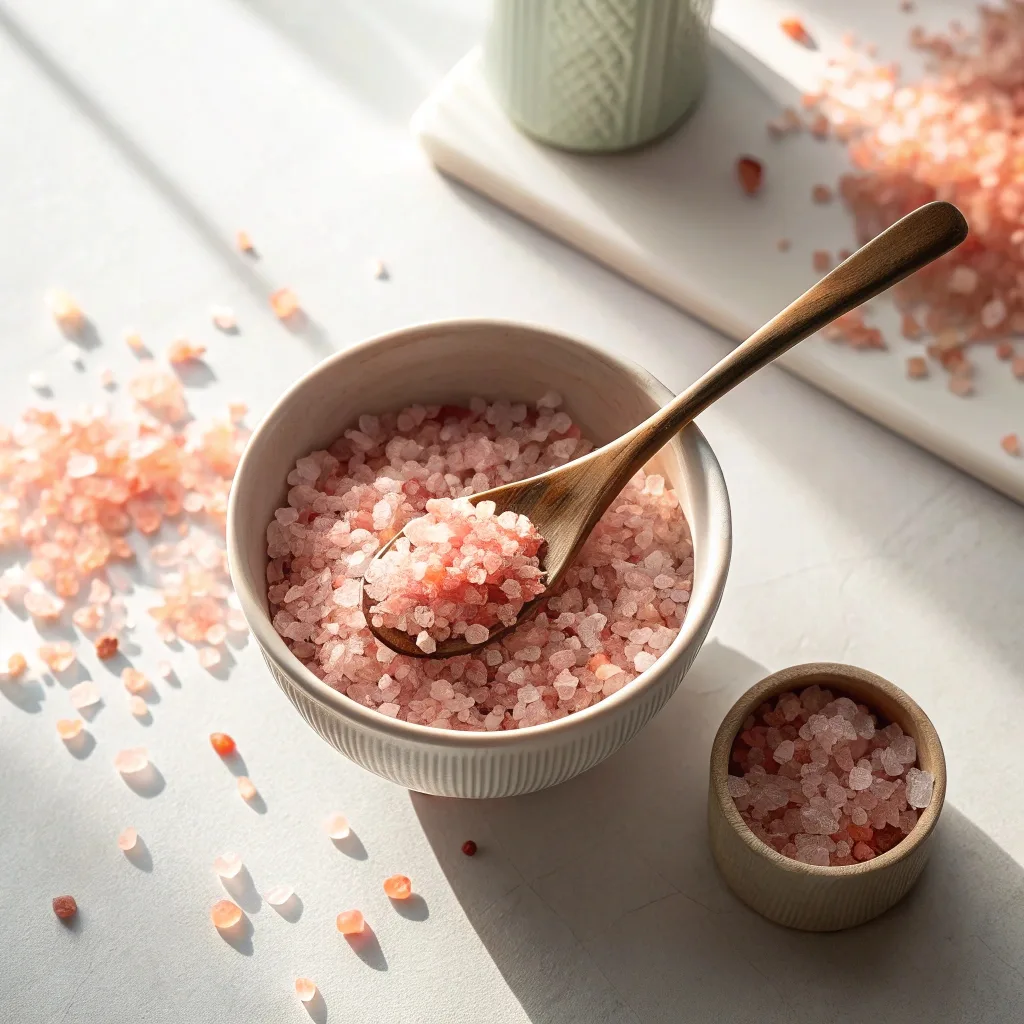Japanese Pink Salt for weight loss is trending thanks to TikTok and wellness influencers. It’s promoted as a detox salt rich in minerals that allegedly help reduce bloating and burn fat. To try it, dissolve ½ teaspoon of pink mineral salt in warm water and drink it first thing in the morning. While some say it curbs cravings and helps digestion, there’s no proven link to fat loss. However, replacing table salt with Japanese diet salt could support hydration and cleaner eating. Always speak to a doctor before starting salt water weight loss methods.
Table of Contents
Japanese Pink Salt for Weight Loss: Benefits, Myths & Safe Use
Where Did Japanese Pink Salt Come From?
Let’s be honest—Japanese Pink Salt for weight loss isn’t something you’ll find in traditional Japanese kitchens. In fact, most Japanese diets focus on low-sodium condiments like miso and tamari. So what’s behind this viral salt?
On TikTok and wellness blogs, pink mineral salt packaged as “Japanese” is being hyped as the latest secret to how to lose belly fat. These mineral-rich crystals usually pink from trace elements like magnesium and iron are often Himalayan salt relabeled for appeal. Yet, the trend caught fire after influencers began mixing it into morning detox routines, claiming it acts as a bloating remedy and metabolism booster.
Why People Are Using It for Weight Loss
This detox salt is believed to support weight loss not by melting fat directly, but by helping reduce water retention and digestive sluggishness. That’s why many use it in a salt water weight loss drink ½ tsp in warm water, first thing in the morning.
So, does it work? The truth is, there’s no clinical proof that pink salt helps burn fat. But it can support hydration, and when it replaces processed salt in meals, it may promote better balance. Wellness lovers are pairing it with whole foods and routines inspired by the Japanese diet salt philosophy: simple, natural, and minimally refined.
If you’re curious, check out our light recipes using clean ingredients, like steamed veggie bowls and our gut-friendly egg salad. These swaps go further than any salt trick.
How to Use Japanese Pink Salt for Weight Loss Safely
Print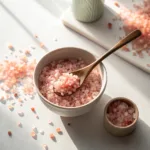
Japanese Pink Salt for Weight Loss – 5 Useful Truths to Know
- Total Time: 2 min
- Yield: 1 serving 1x
- Diet: Vegan
Description
A simple detox drink using Japanese Pink Salt that supports hydration and digestion. Great for starting the morning clean.
Ingredients
½ tsp Japanese Pink Salt
8 oz warm water
1 slice lemon (optional)
Pinch of ginger (optional)
Instructions
Warm the water (not boiling).
Stir in Japanese Pink Salt until dissolved.
Add lemon and ginger if desired.
Drink slowly first thing in the morning.
Notes
Do not exceed more than ½ tsp daily.
Not a replacement for meals.
Stay hydrated.
- Prep Time: 2 mins
- Cook Time: 0 min
- Category: Drinks
- Method: No-cook
- Cuisine: Wellness
Nutrition
- Serving Size: 8 oz
- Calories: 2
- Sugar: 0g
- Sodium: 480mg
- Fat: 0g
- Saturated Fat: 0
- Unsaturated Fat: 0g
- Trans Fat: 0g
- Carbohydrates: 0
- Fiber: 0
- Protein: 0
- Cholesterol: 0
Keywords: Japanese Pink Salt, detox drink, weight loss, pink salt water
Proper Use of Japanese Pink Salt in a Daily Routine
If you’re tempted to jump on the bandwagon, the good news is—incorporating Japanese Pink Salt for weight loss is simple. But, it’s important to be realistic about what this pink mineral salt can and can’t do.
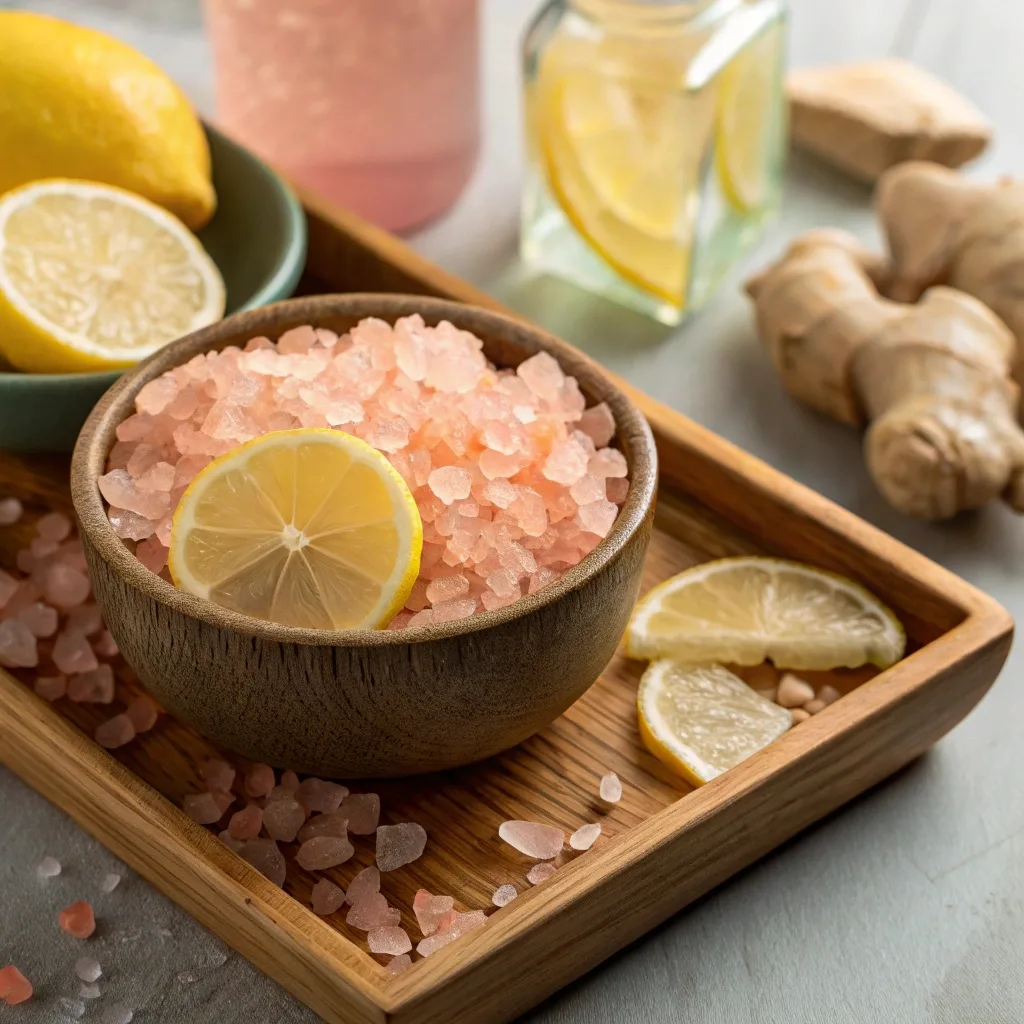
The most popular method is the salt water cleanse:
Mix ½ teaspoon of Japanese Pink Salt into 8 ounces of warm water and drink it on an empty stomach in the morning. This method is said to help flush the digestive system, act as a bloating remedy, and mildly stimulate metabolism. Some users also add a splash of lemon or a pinch of ginger for added detox effect.
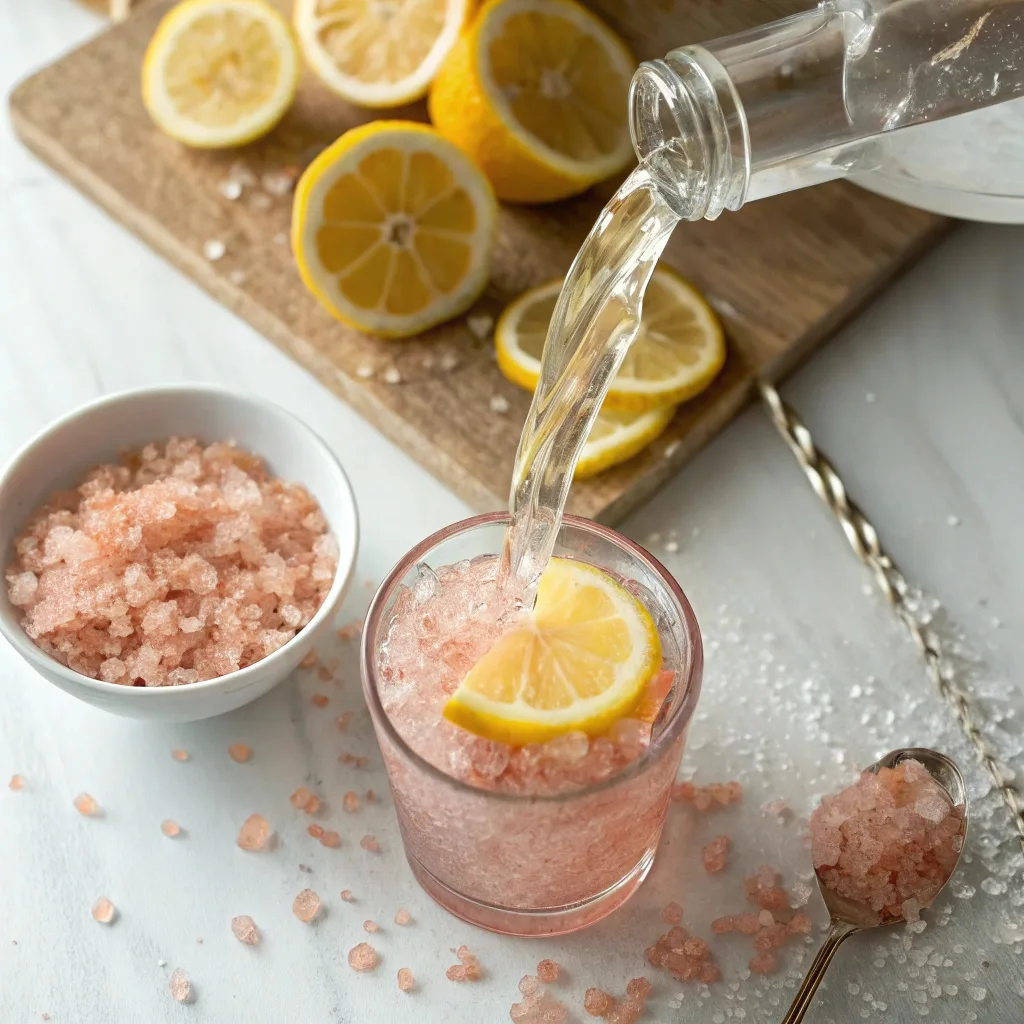
But don’t overdo it. While small amounts may help with hydration and digestion, excessive salt—pink or not—can strain your kidneys or elevate blood pressure. Moderation is key. Always start with less, and consult your doctor if you have heart, kidney, or thyroid concerns.

For those who don’t want to drink salt water, consider using this pink salt in cooking. It’s especially flavorful when sprinkled over roasted vegetables or added to broths. Try it in our cleansing Japanese miso soup or low-salt veggie ramen, where it blends perfectly with gut-friendly ingredients.
Does It Really Burn Fat or Just Reduce Bloat?
Let’s clarify one thing: no salt actually burns fat. What makes people feel slimmer after a few days of the salt water detox is likely reduced water retention, not fat loss. This can make your stomach feel flatter and help clothes fit better, but it doesn’t replace calorie balance or physical activity.
What this pink salt can do is encourage people to be more mindful—of their morning routine, of drinking water, and of ditching processed sodium for a cleaner source. All of those changes support weight loss goals, even if indirectly.
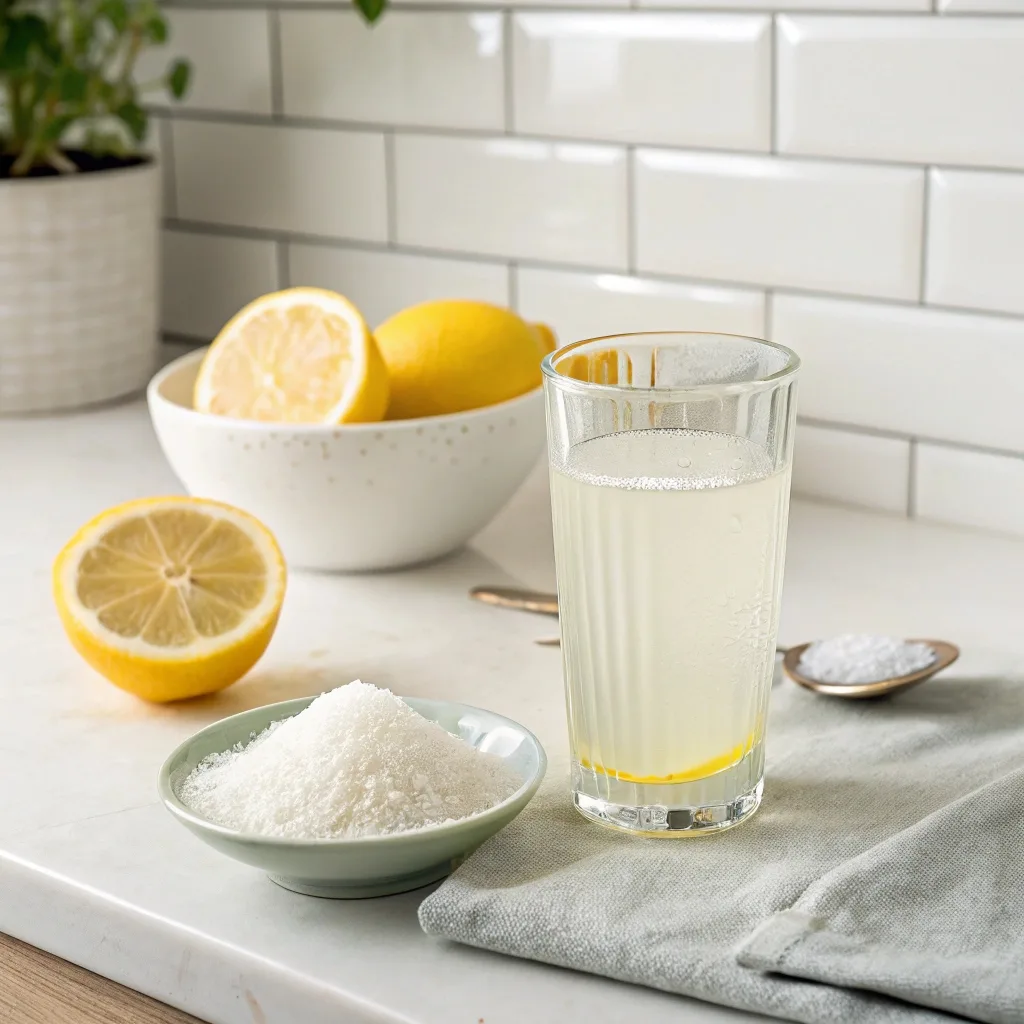
Some also say using this Japanese diet salt helps reset taste buds, making processed foods taste overly salty and less appealing. That may lead to reduced junk food intake and better control over cravings, which ties into long-term success for those wondering how to lose belly fat naturally.
Japanese Pink Salt vs. Himalayan Salt – What’s the Difference?
Not All Pink Salts Are Created Equal
One of the most common questions is whether Japanese Pink Salt is the same as Himalayan Salt. And here’s the honest truth: in most cases, they’re identical—or at least, nearly so.
There is no official classification for Japanese Pink Salt in scientific or culinary databases. What’s often marketed as Japanese is typically Himalayan pink mineral salt imported from Pakistan or blended with trace minerals in small batches. The pink color comes from iron oxide, and both types are rich in minerals like magnesium, potassium, and calcium.
The difference? Branding. Himalayan salt is widely available in grocery stores and health markets. “Japanese Pink Salt” is a newer wellness trend, often found on social media or boutique online shops. It’s marketed for purity, balance, and aesthetic appeal—especially in TikTok detox routines.
The core benefits—if any—are the same: mineral support, reduced sodium intake compared to refined table salt, and a potential psychological boost from using a more “natural” ingredient in your daily routine.
Which Salt Supports a Healthier Lifestyle?
If your goal is clean eating and gradual weight management, either salt can be part of that journey. But neither should be considered a magic bullet. What matters is how you use it—in moderation, and in the context of a balanced, whole-food diet.
Himalayan salt has more mainstream testing, but Japanese Pink Salt—if genuinely sourced from mineral-rich regions—may offer a similar profile. What sets it apart is the motivation behind it. Many who start using this salt begin rethinking their wellness habits, replacing processed snacks and sauces with simpler alternatives.
For example, skip the heavy dressings and try our lemon cucumber salad with pink salt or the avocado egg toast with detox salt. These swaps don’t just lighten your meals—they retrain your taste buds toward healthier options.
So while the labels may differ, both salts can fit into a mindful eating plan. The key is not in the salt—but in your consistent, everyday choices.
Myths, Side Effects & What Science Says About Pink Salt for Weight Loss
Separating Fact from Fiction
There’s no shortage of claims floating around the internet about Japanese Pink Salt for weight loss. But how many are rooted in science? Not many.
First, the idea that drinking salt water melts fat is a salt detox myth. While salt water may trigger temporary bowel movements or reduce bloating, it doesn’t accelerate fat burning. Your body still relies on a calorie deficit, physical activity, and hormonal balance to shed pounds.
Another claim is that pink salt “activates metabolism” or “targets belly fat.” While it’s true that trace minerals like magnesium and potassium are important for bodily functions, no research proves that pink mineral salt enhances fat metabolism directly.
So why do some people feel better after switching to it? It’s likely because they’re reducing processed foods, staying better hydrated, and paying more attention to their meals. Those actions—not the salt itself—lead to noticeable health changes.
Are There Any Side Effects?
Yes—if misused. Salt, even in its purest form, can have side effects. Japanese Pink Salt side effects may include:
- Dehydration if not followed with enough water
- Increased blood pressure in salt-sensitive individuals
- Disruption of electrolyte balance if overused in detox drinks
The key is moderation. Pink salt can be a great upgrade from table salt, but it should never be taken in spoonfuls or used to replace food. And salt water flushes, while trendy, can be harsh on the digestive system if done frequently.
To stay on the safe side, enjoy it in meals. Use it to season dishes like our clean baked salmon with pink salt crust or in a soothing mineral broth on cooler days. These clean eating habits create sustainable change—not quick fixes.
FAQ Section
1. What is Japanese Pink Salt used for?
Japanese Pink Salt is used in cooking and detox routines for its trace minerals and appealing color. It’s believed to support hydration and digestion when used in moderation.
2. Is Japanese Pink Salt good for weight loss?
It may support weight loss indirectly by encouraging cleaner eating and better hydration, but there’s no proof it burns fat. Its role is more supportive than transformative.
3. How do you use Japanese Pink Salt to lose weight?
Most users mix ½ tsp in warm water in the morning or sprinkle it on meals as a substitute for table salt. The key is using it alongside healthy habits.
4. Is Japanese Pink Salt the same as Himalayan Salt?
In most cases, yes. The two are often identical or very similar, with the “Japanese” label used mainly for branding. Both offer similar mineral content.
Conclusion
Japanese Pink Salt for weight loss may not be a miracle, but it’s part of a bigger shift—toward intentional eating, natural ingredients, and ditching chemical-laden products. Whether you add it to lemon water or sprinkle it over fresh veggies, it’s not about what the salt does—it’s about what it inspires you to do differently.
Remember, sustainable results come from consistent habits. Choose real foods, stay hydrated, and focus on the big picture. That’s the real magic.

